On the home front: expanding production
for the war effort
Factories needed millions of new workers as production expanded to meet the demands
of war. (Factories that produce war materials are often referred to as defense plants.)
One big impact of all this was that the Great Depression finally ended.
Below: Men assembling an airplane engine at a factory in the Midwest.
Before the war began, it had been an automobile factory.

Women on the home front stepped forward
The need for manpower on the home front grew so fast that a government office began
producing posters like those below to encourage women to take jobs in factories and shipyards.
The woman on the left is often called "Rosie the Riveter." She represents the many
thousands of women who supported the war effort by taking jobs in defense plants.
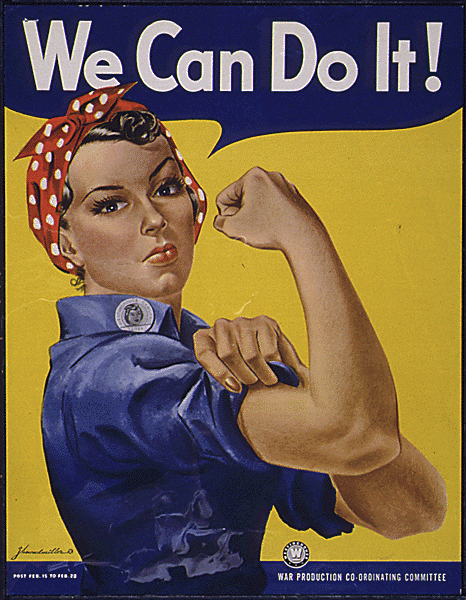 |
 |
Below: A woman operates a machine in an aircraft factory during the war. When World War II
ended, most women who worked in such factories left their jobs and returned to traditional
roles as wives and mothers. Their view of the possibilities for women was greatly expanded,
however, and they passed that sense of wider opportunities on to their daughters during
the 1950s and 1960s.
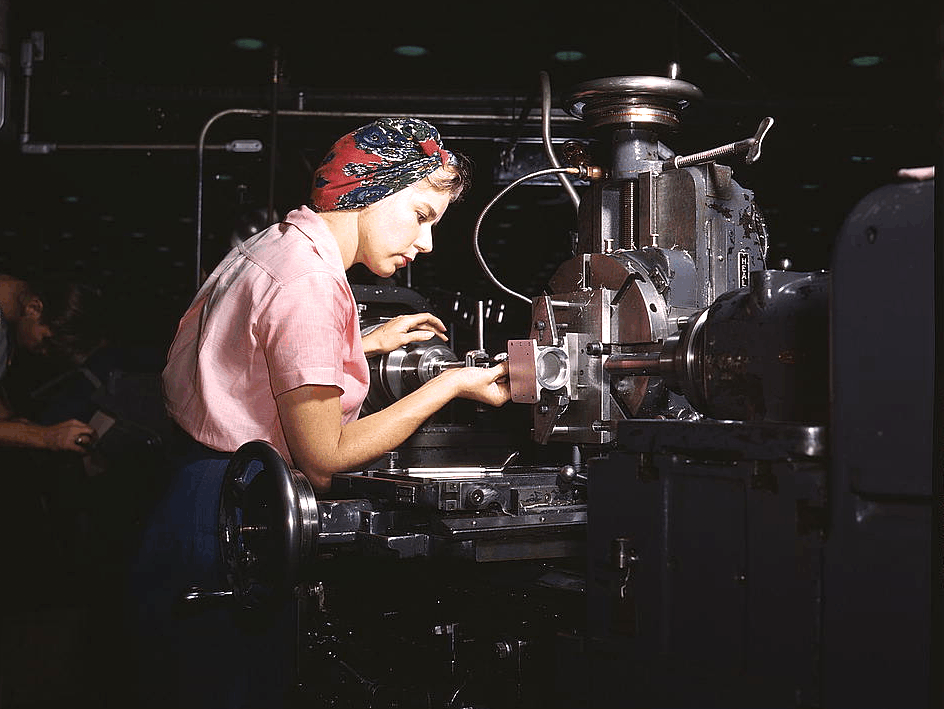
Conservation and rationing of resources
Example: Rationing and ration booklets
Americans at home also supported the war effort by conserving and rationing resources.
A system of ration books and coupons was started for many products. To buy sugar
or gasoline, for example, a customer had to trade in a coupon from his or her ration book,
as well as pay the listed price. This helped conserve sugar and gasoline for use by the armed forces.
Below: A ration booklet and the stamps or coupons that were inside it.
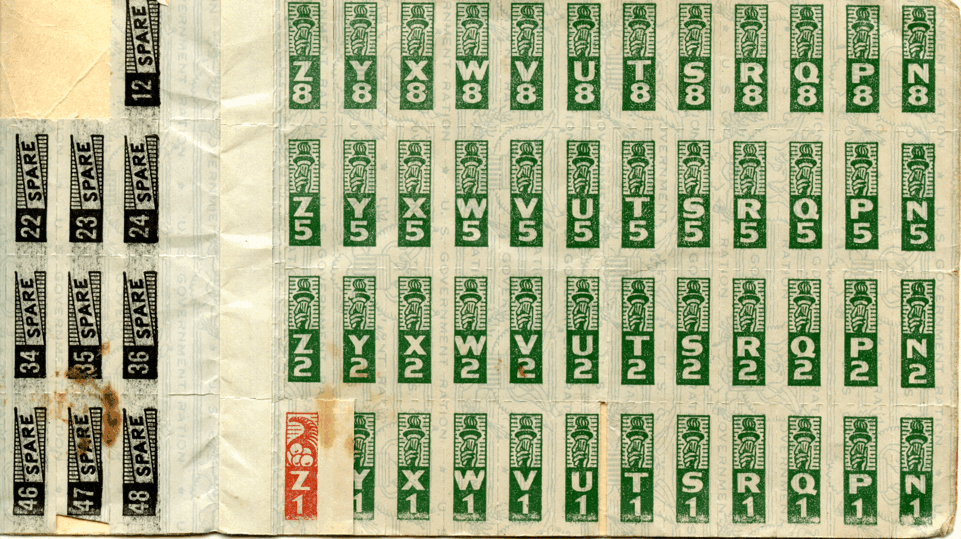
Below: A grocery store customer trades in coupons from her ration
book as she buys a small box of sugar.

Example: Victory Gardens
Another way Americans at home helped conserve resources was through the
widespread planting of Victory Gardens. Families were encouraged to grow
food in their backyards and vacant lots. That would allow more of the
harvest from large farms to be used by the armed forces. It also gave
families a way to feel they were part of the war effort.
Below, left: A government poster promoting Victory Gardens.
Below, right: Two children from Washington, D.C., hold
radishes they've just pulled from their garden.
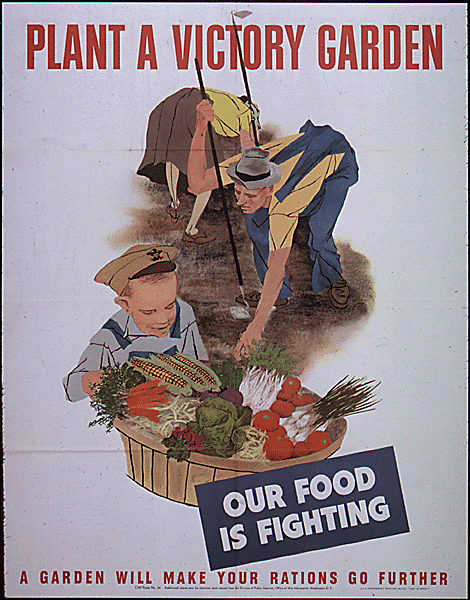 |
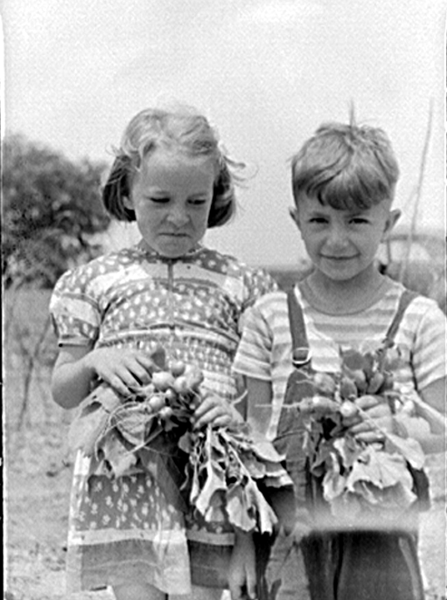 |
The photo below shows a Florida family working on their Victory Garden in 1942.
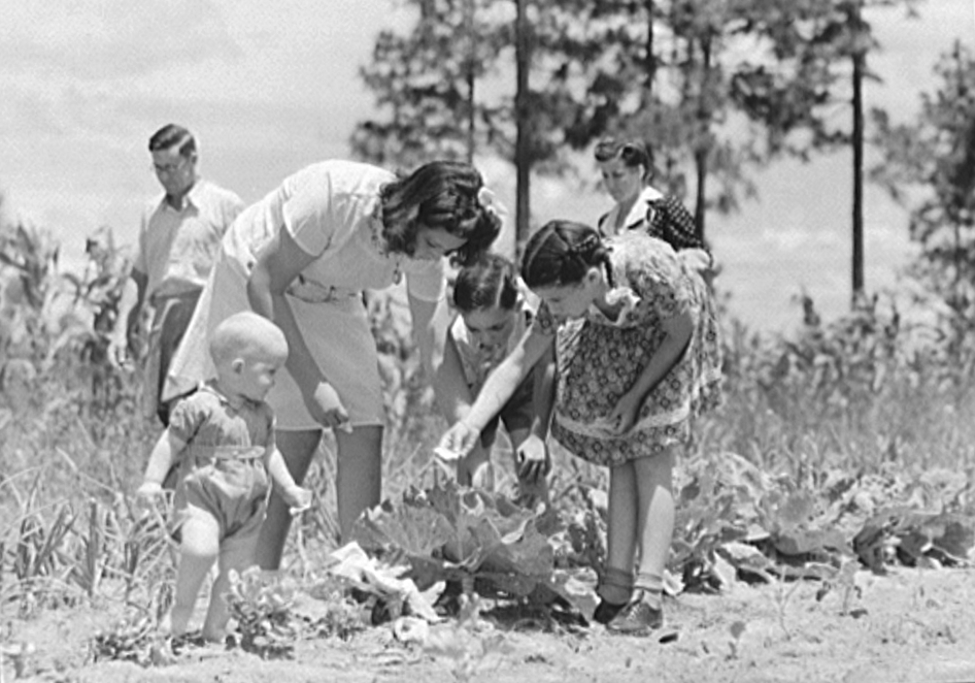
Example: Recycling of resources
Americans also helped conserve resources through nationwide
efforts to collect scrap metal, rubber, and other materials. This group
of school children in Roanoke, Virginia, was one of the first to get
organized and active in gathering scrap material for the war effort.
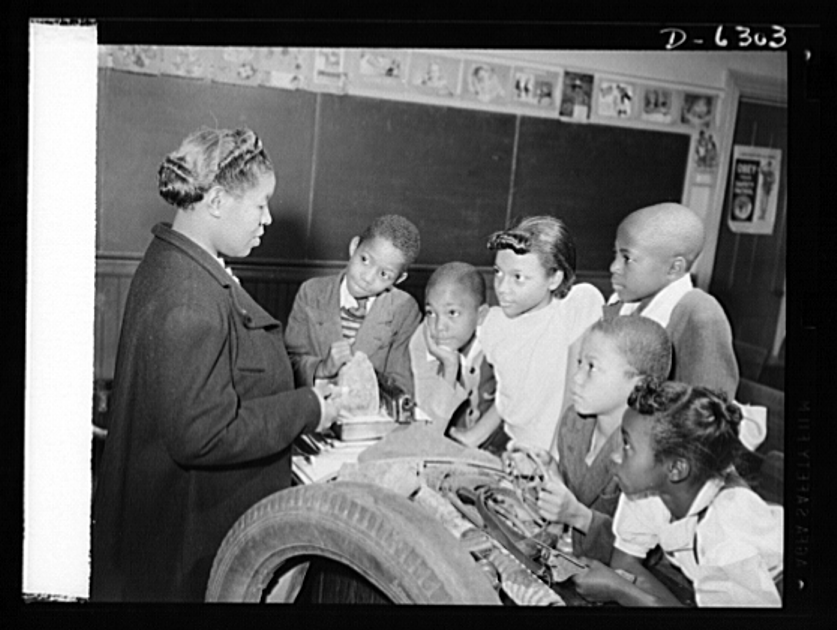
Save that bacon grease! In the home, recycling included saving the bacon grease left after frying bacon on the kitchen stove. The fat recovered from the grease was processed into chemicals used in ammunition and some medicines. The photo on the right shows a woman in Washington, D.C. in 1943 as she saves the leftover bacon grease from the morning breakfast. |
 |
Below: Some of the millions of tons of scrap metal collected around the country
ended up in this steel mill in Pennsylvania. There the scrap was melted down and made
into steel plates for ships, tanks, and other weapons for the war effort.

At war's end: together again at last!
What all families on the home front prayed for was the safe return of those who fought
overseas. This old photo shows the Burns family of Detroit, Michigan, in 1942.
Four of the sons (in the back row, plus the younger son in the front row) served in the
military during the war years. Their mother, Katherine Burns (in the polka dot dress),
and her husband - who is probably behind the camera - were overjoyed when the war
ended and they all returned alive. Another of her sons, William (white shirt, standing),
was a ship design engineer during the war. He later married and became the father of
David Burns, the author of this web site!
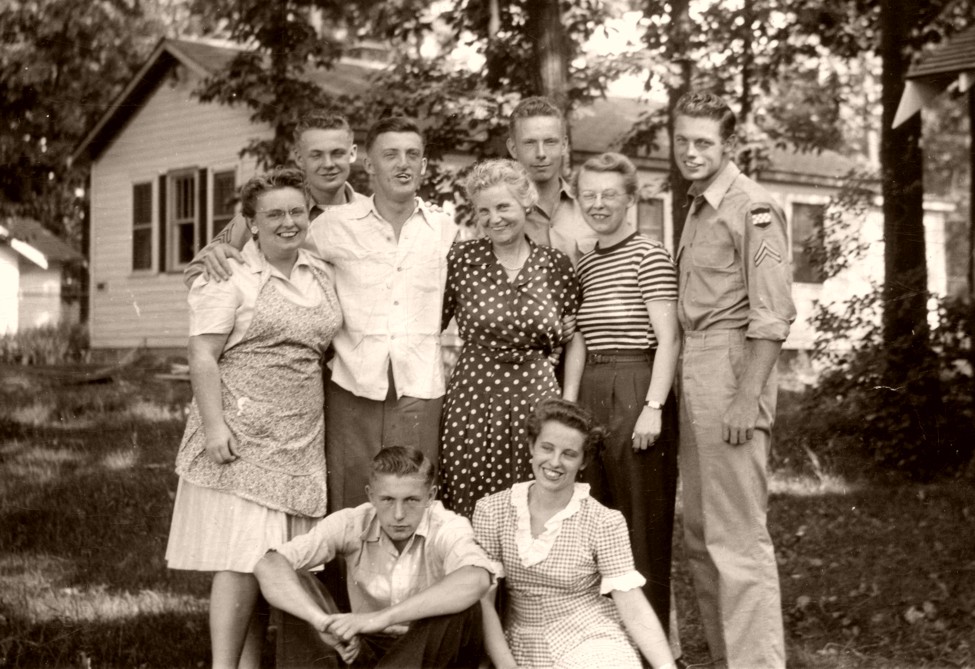
All historical photos except the women defense plant worker posters
and the Victory Garden poster are from the Library of Congress.
The women defense plant worker posters and the
Victory Garden poster are from the National Archives.
Katherine and William Burns, Sr., family photo
courtesy Ted Burns.
Some have been edited or resized for this page.
|
Copyright Notice
Copyright 2009, 2015 by David Burns. All rights reserved. As a guide to the Virginia Standards of Learning, some pages necessarily include phrases or sentences from that document, which is available online from the Virginia Department of Education. The author's copyright extends to the original text and graphics, unique design and layout, and related material. |